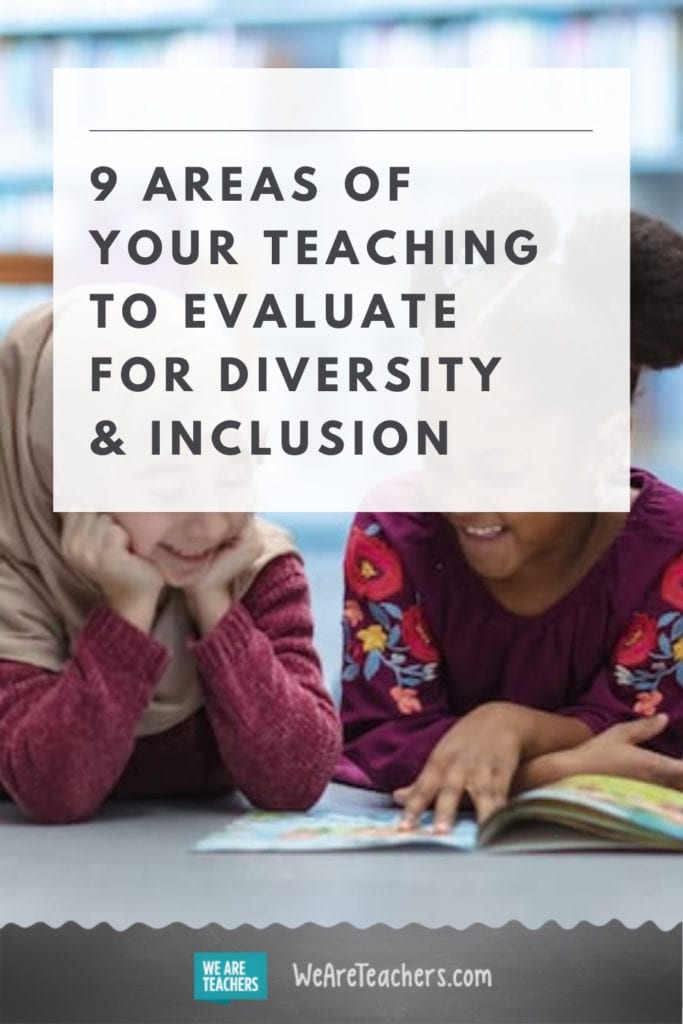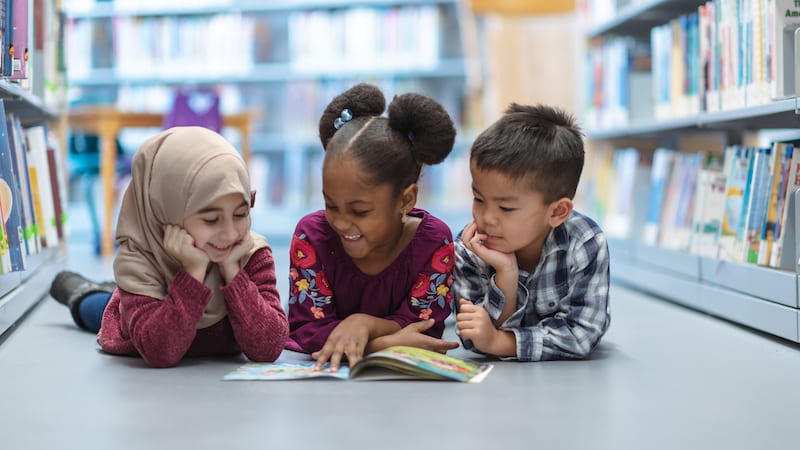As educators, we strive to provide a solid curriculum and welcoming community for our students. That is true now more than ever as we return to school during two national crises: the COVID-19 pandemic and a much-needed conversation about racism and its deeply rooted role in our culture. These issues are top of mind for us and for our students, too. So how can we be sure that our curriculum and classrooms reflect the current moment?
While there are several areas that should be evaluated and modified to promote inclusivity and diversity, we must remember that creating an inclusive environment goes beyond the physical space. Let’s discuss some of the ways small actions can lead to big changes in your classroom.
1. Your Curriculum
Depending on where you teach, you might have a little or a lot of say on your curriculum. But no matter your level of control, you can be an advocate for representation when it comes to the topics, examples, and mentor texts that are shared with your students.
It can seem overwhelming to think about overhauling your entire curriculum, but take it in chunks. This viral tweet provides some good guidelines for evaluating new lessons and materials for teachers and for kids. Ask yourself: who writes the stories? Who benefits from the stories? Who is missing from the stories?
Excellent questions from the wall of my daughter’s classroom. pic.twitter.com/ntgKHYG9eU
— Jodi Kantor (@jodikantor) December 14, 2017
Helpful links: We love Teaching Tolerance for thoughtful analysis on curriculum, as well as following hashtags on Twitter such as #EduColor.
[contextly_auto_sidebar]
2. Social-Emotional Learning
Children’s social-emotional learning is just as critical, if not more, than academic learning. Our community of learners is establishing their personal identities, and it’s important to consider the impact lessons and discussion have on this experience.
Racial identity, gender identity, sexuality, and who they are as learners all matter. Emotional check-ins, share time, and “bucket filling” will add to self-identity and acceptance. This is one of the reasons why ensuring that school dress codes, for example, are inclusive for students of all backgrounds.
Helpful links: Seek out classroom resources that promote social-emotional learning, such as those offered through Newsela and ACSD.
3. Community Building
When self-identity is established, the classroom community can take shape. Individual confidence and self-acceptance lead to a positive environment and acceptance of others. We want to make sure that all of our students feel valued and welcome in our classrooms.
When each individual feels secure, the group will feel more comfortable sharing about their home life and personal identity. In turn, your students will have a greater ability to interact with peers and share perspectives on a deeper level. It’s essential, therefore, that we make sure our students feel seen and heard.
Helpful links: Read 12 Ways to Build Strong Classroom Community With Students and 4 Approaches to Building Positive Community in Any Classroom.
4. Your Classroom Library
You probably know just how important books can be in serving as windows and mirrors for your students. Periodically, go through your book bins and shelves. Take note of who is represented on the book covers, the types of families depicted, and the themes of the stories. Our libraries should reflect the students in our society and our greater society. This includes nonfiction books, too. Make sure the content and visuals in the books, especially related to families, cultures, and religions, are up-to-date and reflect community standards.
And remember—kids don’t just need diverse books. They need diverse authors, too.
Helpful links: Check out our recommended books about racial justice, books bursting with Black joy, and #OwnVoices nonfiction books.
5. Classroom Decor
Do the posters and images on your wall—and any student work displayed—reflect your values as a classroom? When students and their families look around, will they think, “Yes, I belong here!”? Don’t think you have to have an Instagram-worthy classroom to promote equality and justice. Even small gestures, such as a “welcome” sign that includes your students’ home languages, can go a long way toward setting the tone.
Helpful links: Get our free Everyone Is Welcome Here poster.
6. Toys, Games, and Puzzles
Games and puzzles with characters should be culturally representative of your student body and our global society. When teaching younger children, for example, dolls and action figures that are in your classroom should provide multicultural representation.
For pretend play areas, provide costumes that vary by interest. Encourage kids to dress up in whatever way makes them happy. Create a sense of normalcy and community regarding these items. Make it known that dolls and pretend play are for everyone who chooses, and not gender specific.
Helpful links: Check out this list of 20 Diverse Toys for Kids That Embrace Inclusivity and Multiculturalism.
7. Communication With Parents
How we communicate with the parents of our students is quite important. Whether you send notes or flyers home, distribute emails, or post on the school website, you must ensure that you are reaching all community members. Be knowledgeable of the family’s home language, access to technology, and the ability to be reached by phone.
Keep in mind that there may be multiple households to notify when trying to contact a student’s family. Also, consider how best to include parents in a classroom activity, such as inviting them to share a holiday or event of cultural importance, as it will enable you to show appreciation for them and open the lines of communication. Fluidity and flexibility in our communication with families will only add to the strength of our school communities.
Get Started: Read these pieces on Family and Community Engagement, Building Parent-Teacher Relationships, and Biggest Parent Communication Mistakes (Plus How To Fix Them).
8. Purchasing Power
Teachers have purchasing power. From purchasing your reading books to your math manipulatives, you can support women and communities of color. When stocking up on art materials such as paper, crayons, markers, colored pencils, and paints, purchase these items in a variety of shades to represent the beautiful array of your students’ skin tones.
Helpful links: When shopping for classroom supplies, check out lists such as 4 Black Owned School Supply Companies and Back-to-School Shopping with Black-Owned Businesses.
9. Classroom Guests
Consider who the special guests and other adults are that the students see in your classroom. Are they of multicultural backgrounds? Are the teachers, visitors, and special guests that identify as white actively anti-racist? All of these details matter when it comes to representation in the classroom and the education of our students.
Helpful links: Seek out local guests who can bring diversity to your classroom. Hosting a virtual guest? Check out this list of 19 Black Teachers on Instagram to Listen To and Learn From.
Do you have further thoughts on ways to have an inclusive and diverse classroom representation? Share on our WeAreTeachers HELPLINE group on Facebook.


